Uso de la realidad aumentada para el desarrollo de habilidades matemáticas tempranas
Resumen
Palabras clave
Texto completo:
PDFReferencias
Awang, K., Shamsuddin, S. y Ismail, I. (2017). Conceptual Framework for Designing Mobile Augmented Reality in Learning Basic Numbers. World Applied Sciences Journal, 35(7), 1048–1053. doi:10.5829/idosi.wasj.2017.1048.1053
Baroody, A. (2000). El pensamiento matemático de los niños: un marco evolutivo para maestros de preescolar, ciclo inicial y educación especial. Madrid: Visor.
Buitrago-Pulido, R. D. B. (2015). Incidencia de la realidad aumentada sobre el estilo cognitivo: caso para el estudio de las matemáticas. Educación y educadores, 18(1), 27–41. doi:10.5294/edu.2015.18.1.2
Butterworth, B. (2005). The development of arithmetical abilities. Journal of Child Psychology and Psychiatry, 46(1), 3–18. doi:https://doi.org/10.1111/j.1469-7610.2004.00374.x
Cabrera Valdés, B. y Dupeyrón García, M. (2019). El desarrollo y la estimulación de la motricidad fina en los niños y niñas del grado preescolar. Mendive Revista de Educación, 17(2), 222–239.
Recuperado de https://mendive.upr.edu.cu/index.php/MendiveUPR/article/view/1499
Cardoso Espinosa, O., Cerecedo Mercado, M. T. (2008). El desarrollo de las competencias matemáticas en la primera infancia. Revista Iberoamericana de Educación, 47(5), 1–11. doi:https://doi.org/10.35362/rie4752270
Cerda, G., Pérez, C., Ortega-Ruiz, R., Lleujo, M., y Sanhueza, L. (2011). Fortalecimiento de competencias matemáticas tempranas en preescolares, un estudio chileno. Psychology, Society & Education, 3(1), 23–39. doi:https://doi.org/10.25115/psye.v3i1.550
De Smedt, B., Verschaffel, L., y Ghesquière, P. (2009). The predictive value of numerical magnitude comparison for individual differences in mathematics achievement. Journal of Experimental Child Psychology, 103(4), 469–479. doi: https://doi.org/10.1016/j.jecp.2009.01.010
De Smedt, B., Noël, M.-P. P., Gilmore, C., y Ansari, D. (2013). How do symbolic and nonsymbolic numerical magnitude processing skills relate to individual differences in children’s mathematical skills? A review of evidence from brain and behavior. Trends in Neuroscience
and Education, 2(2), 48–55. doi:https://doi.org/10.1016/J.TINE.2013.06.001
Díaz, V. M. (2017). La realidad aumentada en la esfera educativa del alumnado de grado de educación infantil. Estudio de caso. Revista Pixel-Bit. Revista de Medios y Educación, (51), 7–20. doi: http://dx.doi.org/10.12795/pixelbit.017.i51.01
Fracchia, C. C., Alonso de Armiño, A. C., y Martins, A. (2015). Realidad Aumentada aplicada a la enseñanza de Ciencias Naturales. Revista TE & ET, 16, 7–15. Recuperado de http://www.scielo.org.ar/scielo.php?script=sci_arttext&pid=S1850-99592015000200002&lng=es&tlng=en.
Geary, D. C., y Moore, A. M. (2016). Cognitive and brain systems underlying early mathematical development. En M. Cappelletti y W. Fias (Ed.), Mathematical Brain Across the Lifespan (pp. 75–103). Elsevier. doi:https://doi.org/10.1016/bs.pbr.2016.03.008
Gelman, R., Meck, E., y Merkin, S. (1986). Young children’s numerical competence. Cognitive development, 1(1), 1–29. doi: https://doi.org/10.1016/S0885-2014(86)80021-1
Ginsburg, H. P., y Baroody, A. J. (2003). TEMA-3: Test of Early Mathematics Ability. Pro-ed.Halberda, J., Mazzocco, M. M. M., y Feigenson, L. (2008). Individual differences in non-verbal number acuity correlate with maths achievement. Nature, 455(7213), 665–668. doi:https://doi.org/10.1038/nature07246
Izard, V., Sann, C., Spelke, E. S., & Streri, A. (2009). Newborn infants perceive abstract numbers. Proceedings of the National Academy of Sciences, 106(25), 10382–10385. doi:https://doi.org/10.1073/pnas.0812142106
Kamii, C. (1985). El niño reinventa la aritmética. Implicaciones de la teoría de Piaget. Madrid: Visor.
Kaufmann, L., Kucian, K., y von Aster, M. (2015). Development of the numerical brain. In R. C.
Kadosh y A. Dowker (Eds.), The Oxford handbook of numerical cognition (485–501). Oxford University Press. doi:https://doi.org/10.1093/oxfordhb/9780199642342.013.008
Kersey, A. J., y Cantlon, J. F. (2017). Neural tuning to numerosity relates to perceptual tuning in 3–6-year-old children. Journal of Neuroscience, 37(3), 512–522. doi:https://doi.org/10.1523/
JNEUROSCI.0065-16.2016
Lancioni, G. E., y Smeets, P. M. (1986). Procedures and parameters of errorless discrimination training with developmentally impaired individuals. En: N. R. Ellis y N.W. Bray (Ed), International
review of research in mental retardation (pp. 135–164). Elservier. doi:https://doi.org/10.1016/S0074-7750(08)60077-4
Lefevre, J. A., Fast, L., Skwarchuk, S. L., Smith-Chant, B. L., Bisanz, J., Kamawar, D., y
Penner-Wilger, M. (2010). Pathways to Mathematics: Longitudinal Predictors of Performance. Child Development, 81(6), 1753–1767. doi:https://doi.org/10.1111/j.1467-8624.2010.01508.x
León Díaz, F., Duque Bedoya, E., y Escobar Ibarra, P. (2018). Estrategias de formulación de preguntas de calidad mediadas por realidad aumentada para el fortalecimiento del pensamiento científico. Revista Mexicana de Investigación Educativa, 23(78), 791-815. Recuperado de
http://www.scielo.org.mx/scielo.php?script=sci_arttext&pid=S1405-66662018000300791&ln g=es&tlng=es
Lin, H. C. K., Su, S. H., Wang, S. T., y Tsai, S. C. (2015). Influence of cognitive style and cooperative learning on application of augmented reality to natural science learning. International Journal of Technology and Human Interaction (IJTHI), 11(4), 41-66. doi: 10.4018/
IJTHI.2015100103
López Hernández, F. J., Fuchs Gómez, O. L., y Briones Cortés, R. (2019). Realidad aumentada y Matemáticas: propuesta de mediación para la comprensión de la función. Revista Campus Virtuales, 8(2), 63–72. Recuperado de http://uajournals.com/ojs/index.php/campusvirtuales/
article/view/500
Lyons, I. M., y Ansari, D. (2015). Foundations of Children’s Numerical and Mathematical Skills: The Roles of Symbolic and Nonsymbolic Representations of Numerical Magnitude. Advances in Child Development and Behavior, 48, 93–116. doi:https://doi.org/10.1016/bs.acdb.2014.11.003
Martínez, O., Mejía, E., Ramírez, W., y Rodríguez, T. (2021). Incidencia de la realidad aumentada en los procesos de aprendizaje de las funciones matemáticas. Información Tecnológica, 32(3), 3–14. doi:http://dx.doi.org/10.4067/S0718-07642021000300003
Ministerio de Educación Nacional (2016). Fundamentación en matemáticas. Recuperado de https://aprende.colombiaaprende.edu.co/ckfinder/userfiles/files/fundamentacionmatematicas.pdf
Morejón Sánchez, J. F. (2018). La realidad aumentada y la didáctica educativa. (Trabajo de tesis de Maestría). Universidad Técnica de Ambato. Ambato. Recuperado de https://repositorio.uta.edu.ec/jspui/handle/123456789/28916
Mundy, E., y Gilmore, C. K. (2009). Children’s mapping between symbolic and nonsymbolic representations of number. Journal of Experimental Child Psychology, 103(4), 490–502. doi:https://doi.org/10.1016/j.jecp.2009.02.003
Nieder, A. (2018). Evolution of cognitive and neural solutions enabling numerosity judgements: Lessons from primates and corvids. Philosophical Transactions of the Royal Society B, 373,
–12. doi: https://doi.org/10.1098/rstb.2016.0514
Núñez del Río, C., De Castro Hernández, C., Del Pozo Galeote, A., Mendoza Ortigosa, C. y Pastor Llamas, C. (2010). Inicio de una investigación de diseño sobre el desarrollo de competencias numéricas con niños de 4 años. En Investigación en Educación Matemática
XIV. SEIEM (pp. 463-474). Recuperado de https://eprints.ucm.es/id/eprint/12784/
Ozdamli, F., y Karagozlu, D. (2018). Preschool teachers’ opinions on the use of augmented reality application in preschool science education. Croatian Journal of Education, 20(1), 43–74.
doi:https://doi.org/10.15516/cje.v20i1.2626
Price, G. R., y Wilkey, E. D. (2017). Cognitive mechanisms underlying the relation between nonsymbolic and symbolic magnitude processing and their relation to math. Cognitive Development, 44, 139–149. doi:https://doi.org/10.1016/j.cogdev.2017.09.003
QuiverVision. (2020). Quiver-3D Coloring App (6.4) [Aplicación móvil]. Google Play. https://play.google.com/store/apps/details?id=com.puteko.colarmix
Schneider, M., Beeres, K., Coban, L., Merz, S., Susan Schmidt, S., Stricker, J., y De Smedt, B. (2017). Associations of non-symbolic and symbolic numerical magnitude processing with
mathematical competence: a meta-analysis. Developmental Science, 20(3), e12372. doi:https://doi.org/10.1111/desc.12372
Sung N-J, Ma J, Choi Y-J, Hong M. (2019). Real-Time Augmented Reality Physics Simulator for Education. Applied Sciences, 9(19), 1–12. doi:http://dx.doi.org/10.3390/app9194019
Velázquez, A., y Ruiz, J. (noviembre, 2013). Enseñanza del concepto de número o competencia matemática temprana con TIC. En Y. Morales y A. Ramirez (Ed.), Memorias I CEMACYC (pp. 1-13). Recuperado de http://funes.uniandes.edu.co/4300/
Van De Rijt, B. y Van Luit, J. (1998). Effectiveness of the Additional Early
Mathematics program for teaching children early mathematics. InstructionalScience, 26 (5), 337-358. Recuperado de https://link.springer.com/content/pdf/10.1023/A:1003180411209.pdf
Vanbinst, K., y De Smedt, B. (2016). Individual differences in children’s mathematics achievement: The roles of symbolic numerical magnitude processing and domain-general cognitive functions. En M. Cappelletti y W. Fias (Eds.), Mathematical Brain Across the Lifespan (pp. 105–130). Elsevier B.V. doi:https://doi.org/10.1016/bs.pbr.2016.04.001
Xenidou-Dervou, I., Molenaar, D., Ansari, D., van der Schoot, M., y van Lieshout, E. C. D. M. (2017). Nonsymbolic and symbolic magnitude comparison skills as longitudinal predictors of mathematical achievement. Learning and Instruction, 50, 1–13. doi:https://doi.org/10.1016/j.
learninstruc.2016.11.001
Zurita Rovalino, M. E. (2018). El aprendizaje por imitación y la identificación de roles en los niños y niñas de la Unidad Educativa Madre Gertrudis del cantón Cevallos provincia del Tungurahua (Trabajo de pregrado). Universidad Técnica de Ambato. Ambato. Recuperado de https://repositorio.uta.edu.ec/jspui/handle/123456789/28650

Este obra está bajo una licencia de Creative Commons Reconocimiento-NoComercial-CompartirIgual 4.0 Internacional.
 |
ISSN 1853-1318 (impresa) - ISSN 1853-1326 (en línea)
|
| Indizada en: | |
 | CCPP Catálogo Colectivo de Publicaciones Periódicas http://ccpp.caicyt.gov.ar/cgi-bin/koha/opac-detail.pl?biblionumber=149451 |
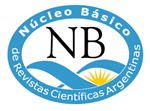 | Núcleo Básico de Revistas Científicas Argentinas, Caicyt http://www.caicyt-conicet.gov.ar/sitio/revista-de-educacion/ |
 | Google académico (en proceso de actualización) |
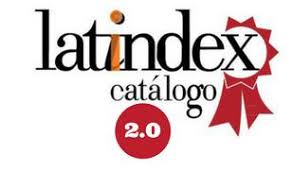 | Latindex https://www.latindex.org/latindex/ficha/14316 |
 | Redib http://redib.org/Record/oai_revista1003-revista-de-educaci%C3%B3n |
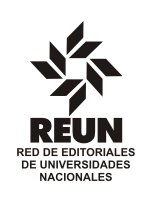 | REUN https://www.reun.com.ar/ |
 | DOAJ Link/ |
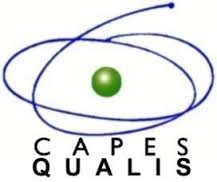 | Capes Qualis Link/ |
 | Journals for Free Link/ |
 | Latinoamericana (Asociación de Revistas Académicas de Humanidades y Ciencias Sociales) Link/ |
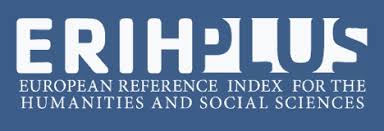 | ERIH PLUS (European Reference Index for the Humanities and Social Sciences) Link/ |
 | ROAD (Directory of Open Acces Scholarly Resources) Link/ |
 | Directory of Research Journals Indexing (DRJI) Link/ |
 | LatinRev Link/ |
| Esta revista utiliza el Identificador Persistente | |
.png) |

